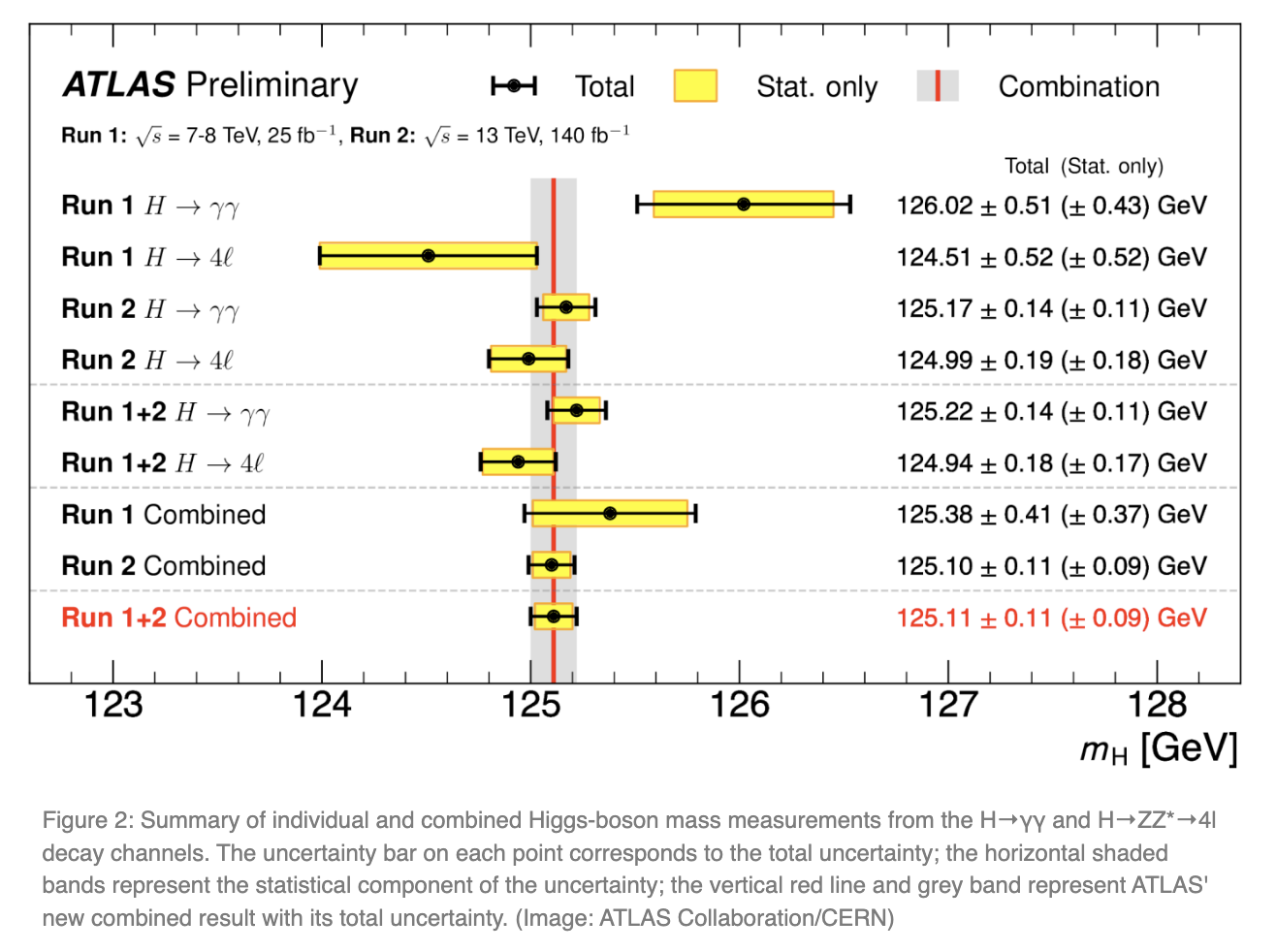New precision measurement of the Higgs boson mass from the ATLAS experiment

Figure 1: The diphoton invariant mass distribution of all data events (black dots). The Higgs boson corresponds to the excess of events observed at 125 GeV with respect to the background (dashed line). (Image: ATLAS Collaboration/CERN)
About eleven years after its discovery, the Higgs boson is becoming increasingly central to the study of the fundamental structure of our universe. The ATLAS experiment, at the CERN Large Hadron Collider in Geneva, has just made public at the LeptonPhoton2023 conference the most precise measurement of the mass of the Higgs boson, breaking through for the first time the relative precision threshold of 0.1%. The mass of the Higgs boson (mH) is a free parameter of the Standard Model of elementary particles (SM) which must be determined experimentally. The precise measurement of its value is of paramount importance in elementary particle physics: firstly, the production cross sections of the Higgs boson and its decay rates depend on its mass. Secondly, the mass values of the Higgs boson, the W boson and the top quark play a fundamental role in verifying the internal consistency of the Standard Model. Finally, the mass of the Higgs boson plays a key role in the shape and evolution with energy of the Higgs potential in the SM and, consequently, plays a crucial role in determining the stability of our universe.
Almost five years after the end of the data-taking phase called ”Run 2” (2015-2018), the ATLAS collaboration has released the final measurement of the mass of the Higgs boson in the two-photon decay channel. Compared to the previous ATLAS measurement in this channel, the new result benefits from a larger data sample which allowed halving of the statistical uncertainty and a remarkable reduction of a factor of four of the systematic uncertainty. This result was possible only thanks to a long and detailed study of the systematic uncertainties on the calibration of the photon energy scale. The value of the mass of the Higgs boson obtained by combining the new measurement with that obtained in “Run1” (2011-2012) in the same channel is:
mH= 125.22 ± 0.11(stat.) ± 0.09(syst.) GeV = 125.22 ± 0.14 GeV.
With an uncertainty of 1.1 per-mille, this measurement becomes the most precise ever obtained from a single decay channel.
The new measurement was then combined with the one already published in the 4-lepton channel which allows to further reduce the uncertainty:
mH= 125.11± 0.09(stat) ±0.06 (syst) GeV =125.11±0.11 GeV
This result, with a relative uncertainty of 0.09%, represents to date the most precise available measurement of this fundamental parameter.

The ATLAS group of the Milano University physics department and Milano INFN section has a long history of activity within the collaboration in the construction of the electromagnetic calorimeter, the pixel tracker and big-data computing. The measurement saw a fundamental contribution from the Milano analysis team, heavily involved in the calibration of the electromagnetic calorimeter and in the study of the decay channel of the Higgs boson into two photons.